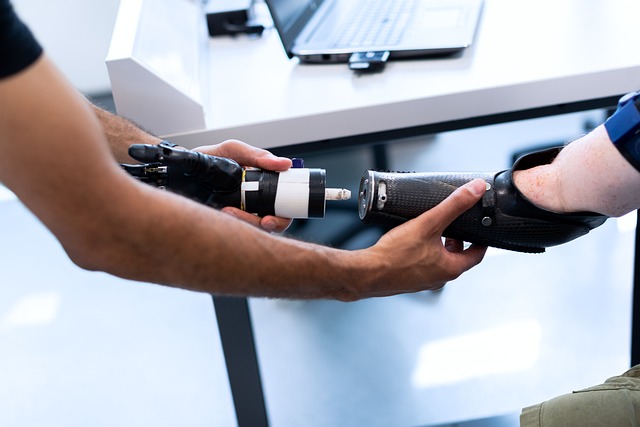Myoelectric prosthetics have changed the way people with limb loss interact with the world. Unlike traditional prosthetic limbs that rely on body-powered movement, myoelectric prosthetics use electrical signals from muscles to provide more natural, intuitive control. These advanced devices have given users better grip strength, smoother motion, and increased independence.
But the technology is evolving fast. By 2030, myoelectric prosthetics will be smarter, more responsive, and even capable of delivering real-time sensory feedback. The integration of AI, brain-machine interfaces, soft robotics, and cloud connectivity is paving the way for prosthetic limbs that feel and function like natural extensions of the body.
At Robobionics, we are committed to staying at the forefront of prosthetic innovation. In this article, we’ll explore the exciting advancements in myoelectric prosthetics, what’s coming next, and how these technologies will improve mobility, comfort, and functionality for users worldwide.
1. How Myoelectric Prosthetics Work: A Quick Overview
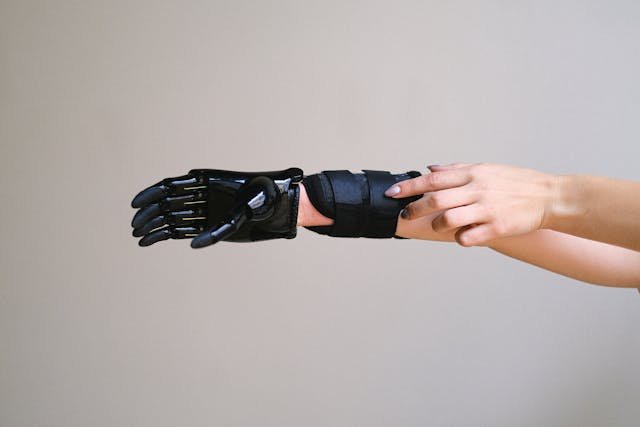
Myoelectric prosthetics use electromyography (EMG) sensors to detect electrical signals generated by muscle contractions. These signals are then processed by microcontrollers inside the prosthetic limb, allowing users to control movement in real time.
When a user thinks about moving their fingers, hand, or arm, the muscles in the residual limb generate tiny electrical impulses. These impulses are picked up by sensors, which send the signals to AI-powered software that translates them into smooth, coordinated movements. Unlike traditional prosthetics, myoelectric limbs do not require mechanical cables or external harnesses, making them more comfortable and natural to use.
By 2030, myoelectric prosthetics will become even more precise, allowing users to perform finer motor tasks like typing, writing, and playing musical instruments with greater ease.
2. AI-Powered Myoelectric Prosthetics: Learning from User Movements
Artificial Intelligence (AI) is revolutionizing myoelectric prosthetics, making them smarter and more adaptive. AI-driven prosthetics learn from user behavior, improving their accuracy, speed, and responsiveness over time.
Modern AI-powered myoelectric limbs can analyze muscle signals and predict user intent. If a user repeatedly struggles with a specific motion, the AI can automatically fine-tune the prosthetic’s response, making movement smoother and more natural. These intelligent prosthetics also adjust grip strength automatically, allowing users to hold delicate objects without crushing them.
By 2030, AI-driven myoelectric prosthetics will feature real-time learning algorithms, enabling them to adapt instantly to different tasks, terrains, and environmental conditions.
3. Brain-Machine Interfaces: Controlling Prosthetics with Thought
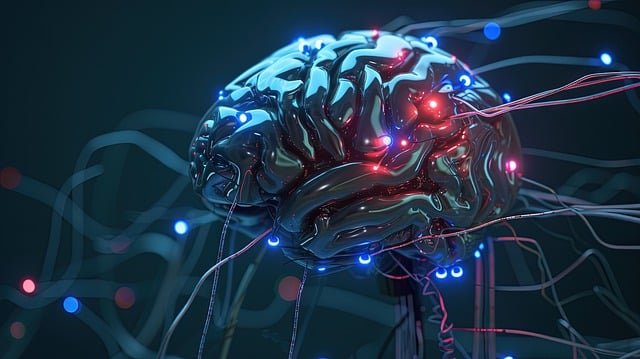
One of the most exciting developments in myoelectric prosthetics is the integration of brain-machine interfaces (BMIs), allowing users to control their prosthetic limbs with their thoughts.
BMIs work by detecting neural signals directly from the brain and translating them into movement commands for the prosthetic limb. This technology eliminates the need for muscle contractions, making prosthetic control faster, more intuitive, and seamless. Instead of relying on residual limb muscles, users will be able to move their prosthetic hand just as they would a natural hand—by simply thinking about it.
By 2030, BMI-powered myoelectric prosthetics will be widely available, offering a new level of control and functionality that makes prosthetic limbs feel truly like a part of the body.
4. Haptic Feedback: Restoring the Sense of Touch
One of the biggest limitations of current myoelectric prosthetics is that they do not provide sensory feedback—users can control movement, but they cannot feel what they are touching. Haptic feedback is set to change that.
Future myoelectric prosthetics will use pressure sensors and electrical stimulation to send touch sensations back to the user’s nervous system. This means that a user wearing a prosthetic hand will be able to feel the softness of fabric, the firmness of a handshake, or the texture of a surface.
By 2030, haptic feedback will be fully integrated into myoelectric prosthetics, making artificial limbs more lifelike than ever before and giving users a more immersive and natural experience.
5. Cloud-Connected Prosthetics: Remote Updates and Customization

Smart prosthetics are now being connected to the cloud, allowing users to receive software updates, remote adjustments, and AI-powered optimizations without visiting a clinic.
With cloud-connected myoelectric prosthetics, users can customize their settings through smartphone apps, adjusting grip strength, movement speed, and sensitivity in real-time. Prosthetists will also be able to analyze usage data remotely and make recommendations without requiring frequent in-person visits.
By 2030, cloud-enabled myoelectric prosthetics will provide real-time performance tracking, ensuring better functionality, easier maintenance, and improved long-term comfort.
6. Soft Robotics: Making Myoelectric Prosthetics More Comfortable
Current myoelectric prosthetics can sometimes feel stiff and rigid, but new advances in soft robotics are helping create more flexible, natural-feeling prosthetic limbs.
Soft robotic prosthetics use elastic materials, lightweight actuators, and bio-inspired designs to mimic the movement and feel of real muscles and joints. These prosthetic limbs can bend and flex naturally, reducing strain and making daily activities more comfortable.
By 2030, soft robotic myoelectric prosthetics will provide a more organic movement experience, reducing fatigue and discomfort while improving performance.
7. The Future of Affordable Myoelectric Prosthetics
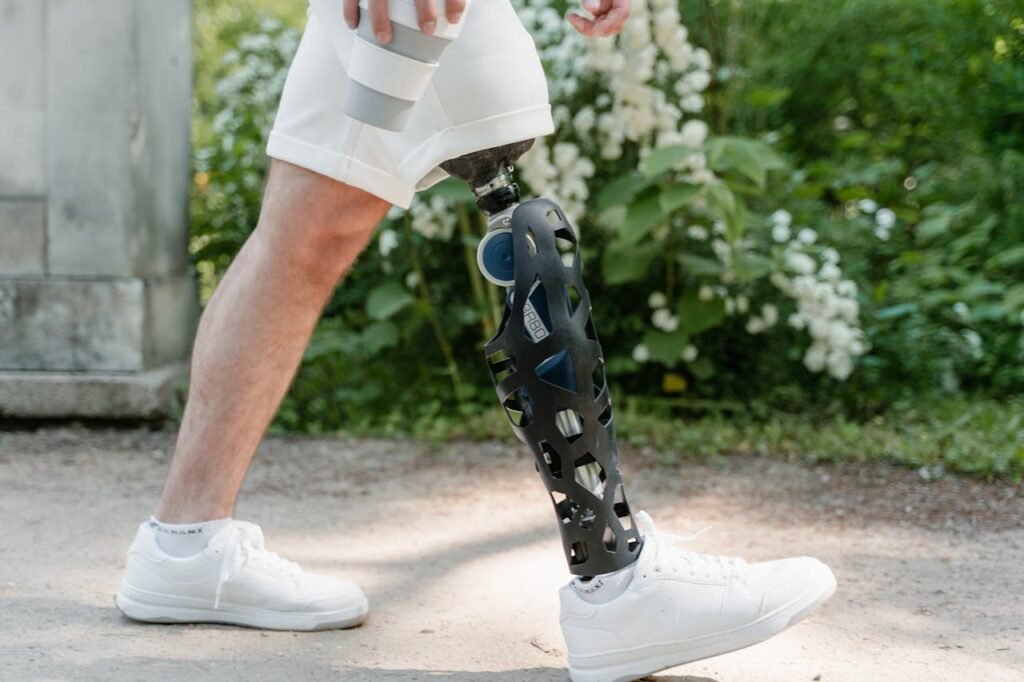
One of the biggest challenges in myoelectric prosthetic adoption has been cost, but new production methods are making these devices more affordable.
With 3D printing, AI-powered manufacturing, and local production hubs, the cost of myoelectric prosthetics is expected to drop significantly. Governments and NGOs are also investing in funding programs and subsidies, making advanced prosthetics accessible to more people, especially in developing countries.
By 2030, high-quality myoelectric prosthetics will be available at a fraction of today’s costs, ensuring that everyone who needs one can afford one.
8. Multi-Terrain Adaptability: Smarter Myoelectric Prosthetics for Any Environment
One of the biggest limitations of traditional prosthetics is their inability to adapt to different environments. Walking on grass, sand, stairs, or uneven surfaces can be challenging, often requiring users to adjust their walking style manually. However, next-generation myoelectric prosthetics will feature real-time terrain adaptation.
By integrating AI-powered motion tracking and smart sensors, myoelectric prosthetic legs will detect terrain changes instantly and adjust ankle flexibility, step height, and balance control. This will allow users to move smoothly across any surface, reducing strain and improving mobility.
By 2030, myoelectric prosthetics will include multi-terrain adaptability, ensuring that users can walk, run, and climb with ease, no matter where they are.
9. Battery Innovations: Longer-Lasting Power for Myoelectric Limbs
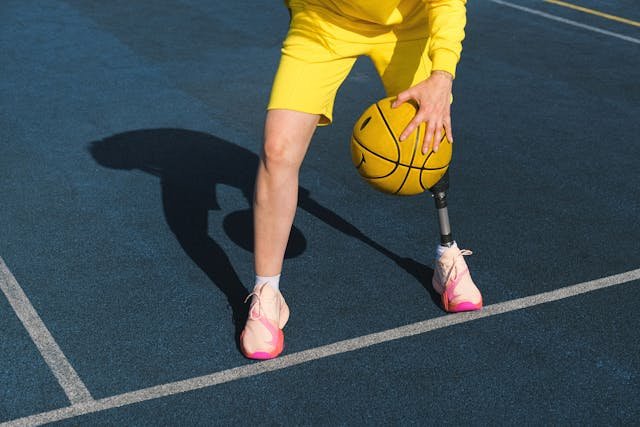
One major drawback of advanced myoelectric prosthetics is battery life. High-powered robotic limbs require frequent recharging, limiting their usability in long workdays or outdoor activities.
Future myoelectric prosthetics will feature energy-efficient AI algorithms that optimize battery usage based on activity. Additionally, wireless charging and self-charging technology—such as kinetic energy harvesting—will allow prosthetics to recharge as users walk or move.
By 2030, myoelectric prosthetics will have ultra-long battery life, ensuring continuous usage with fewer interruptions and less downtime.
10. Augmented Reality (AR) for Prosthetic Training and Customization
Adapting to a new prosthetic limb can be challenging, but Augmented Reality (AR) is making the learning process faster and more interactive.
AR-powered training tools will allow users to see virtual overlays of their prosthetic movement, helping them adjust posture, improve grip, and perfect walking patterns. These AR interfaces can also be used to customize prosthetic settings in real-time, allowing users to adjust speed, grip force, and sensitivity with simple hand gestures or voice commands.
By 2030, AR-assisted myoelectric prosthetic training will be common, ensuring that users can master their prosthetics quickly and efficiently.
11. Smart Prosthetic Ecosystems: Seamless Integration with Smart Homes and Wearables
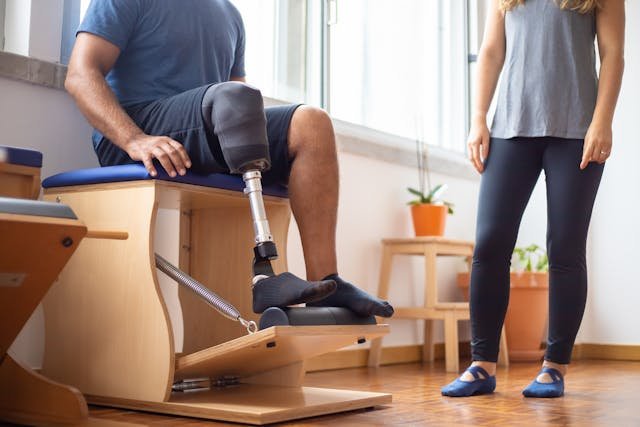
Myoelectric prosthetics will soon be part of a connected digital ecosystem, allowing them to sync with smart home devices, fitness trackers, and wearable technology.
For example, a smart prosthetic hand will be able to control home appliances, such as adjusting lights, opening doors, or operating smart devices. Similarly, AI-powered prosthetic legs will sync with wearable health trackers to provide real-time health monitoring, such as detecting muscle fatigue, tracking step count, and preventing joint strain.
By 2030, myoelectric prosthetics will be fully integrated into smart home and wearable ecosystems, making life more convenient and interactive for users.
12. The Role of 3D Bioprinting in Future Myoelectric Prosthetics
Scientists are now exploring 3D bioprinting, a revolutionary technology that allows the creation of prosthetic limbs with organic tissue-like properties.
Future myoelectric prosthetics could incorporate bioprinted muscle fibers, soft tissues, and even artificial nerves, making them more flexible, lightweight, and biologically compatible. This could lead to better comfort, improved movement, and even self-healing capabilities.
By 2030, bioprinted components in myoelectric prosthetics could become a reality, bridging the gap between artificial limbs and natural human tissue.
13. Personalized Prosthetic Skins: Merging Aesthetics with Functionality
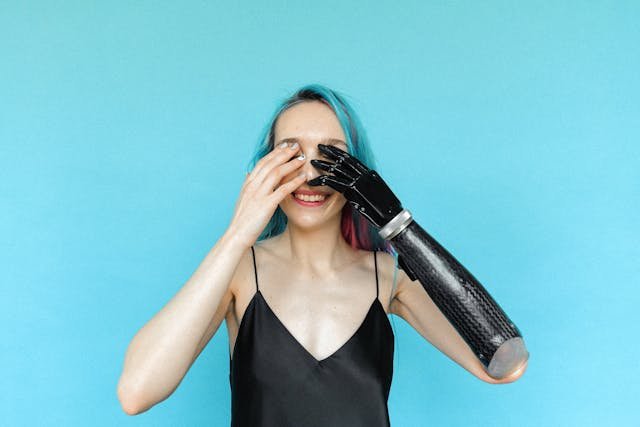
Many prosthetic users want their artificial limbs to look as natural as possible. With next-generation synthetic skin technology, myoelectric prosthetics will feature personalized, realistic outer layers.
Advanced prosthetic skins will use temperature-sensitive materials, lifelike textures, and even built-in haptic sensors, allowing users to feel warmth, pressure, and touch sensations. These skins will also be customizable, allowing users to choose colors, textures, and even tattoo-like designs for a more personal experience.
By 2030, myoelectric prosthetics will look and feel more like real limbs than ever before, enhancing both confidence and functionality.
14. Myoelectric Prosthetics for Industrial and Military Applications
While myoelectric prosthetics are primarily designed for daily mobility, they are also being adapted for high-performance environments, such as construction, heavy lifting, and military use.
Future industrial-grade myoelectric limbs will have reinforced strength, advanced grip control, and AI-powered durability to handle high-impact activities. Military applications will focus on rugged, combat-ready designs, ensuring that amputee soldiers can return to active duty with full functionality.
By 2030, specialized myoelectric prosthetics will be widely used in industrial and military settings, providing enhanced endurance and power for extreme conditions.
15. Ethical Considerations: The Future of Human Enhancement
As myoelectric prosthetics become smarter, faster, and more powerful, there is a growing discussion around human augmentation. If a prosthetic limb can outperform a natural limb, should it be considered a replacement or an enhancement?
Some experts predict that by 2030, high-performance myoelectric prosthetics may be sought after not just by amputees, but by individuals looking to enhance their abilities. This raises ethical and regulatory questions about the fair use of bionic technology in sports, workplaces, and everyday life.
At Robobionics, we believe that prosthetic innovation should focus on restoring mobility, improving quality of life, and ensuring accessibility for all, while also addressing ethical concerns responsibly.
16. The Role of Neuroplasticity in Enhancing Myoelectric Prosthetic Control

One of the most exciting areas of research in myoelectric prosthetics is neuroplasticity, the brain’s ability to rewire itself and adapt to new experiences. This means that over time, the brain can learn to control a prosthetic limb just as naturally as a biological one.
Advanced AI-driven neuroplasticity training will allow myoelectric prosthetic users to develop stronger neural connections, making movements more intuitive and precise. This will reduce mental strain and allow users to focus on daily tasks without thinking about how to control their prosthetic.
By 2030, neuroplasticity-based rehabilitation programs will be widely available, ensuring that prosthetic limbs feel like a true extension of the body rather than an external device.
17. The Future of Fully Self-Healing Myoelectric Prosthetics
Wear and tear are natural concerns for prosthetic users, but self-healing materials are set to revolutionize myoelectric prosthetics.
New developments in bio-inspired materials allow prosthetic components to repair small cracks, dents, and damages automatically. These materials contain microcapsules filled with healing agents that are released when damage occurs, preventing expensive maintenance and prolonging the lifespan of the prosthetic.
By 2030, self-healing prosthetics will significantly reduce repair costs, ensuring that users have long-lasting, durable artificial limbs that require minimal upkeep.
18. Gamification of Prosthetic Training: Making Adaptation Fun and Engaging
One of the biggest challenges for new prosthetic users is adapting to their artificial limb. Traditional training can be repetitive and frustrating, but gamification is changing that.
Future prosthetic training programs will integrate virtual reality (VR) games, AI-driven challenges, and motion-based feedback systems that make learning more interactive and enjoyable. Users will be able to practice their grip, refine movement precision, and strengthen coordination through reward-based training sessions.
By 2030, gamified prosthetic training will be a standard part of rehabilitation, helping users master their myoelectric prosthetic in a fun, engaging, and stress-free way.
Final Thoughts: The Future of Myoelectric Prosthetics is Here
Myoelectric prosthetics are evolving rapidly, with AI, brain-machine interfaces, haptic feedback, and cloud connectivity transforming them into fully adaptive, user-friendly solutions.
By 2030, myoelectric prosthetics will be more natural, intuitive, and accessible than ever before, allowing users to experience near-complete control and functionality. At Robobionics, we are dedicated to pushing the boundaries of prosthetic innovation, ensuring that our users benefit from the most advanced, life-enhancing technologies available.
If you’re ready to explore next-generation myoelectric prosthetic solutions, book a free demo with Robobionics today and step into the future of seamless, intelligent mobility!



